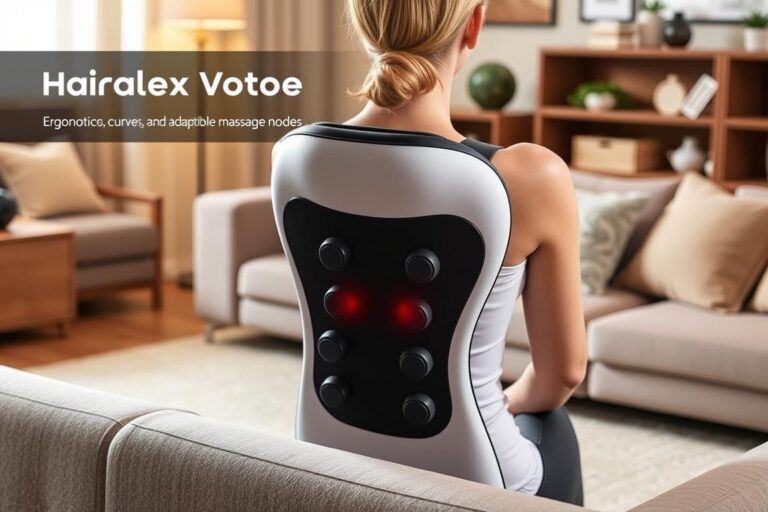Ergonomics Matters: Designing Your Workspace for Peak Productivity

Heading 2: Understanding the Impact of Workspace Design on Productivity

Workspace design plays a crucial role in influencing productivity levels. A well-designed workspace can have a positive impact on employee focus, motivation, and overall performance. On the other hand, a poorly designed workspace can lead to distractions, physical discomfort, and decreased efficiency.
One key aspect of workspace design that affects productivity is the arrangement and placement of furniture and equipment. For example, selecting the right chair can promote optimal comfort and prevent discomfort or pain that may arise from prolonged sitting. Similarly, choosing an appropriate desk that suits individual work needs and promotes efficiency can make a significant difference in employee productivity. Additionally, organizing the workstation in a tidy and clutter-free manner can help reduce distractions and improve concentration levels.
Incorporating ergonomic principles into workspace design is another crucial factor that can enhance productivity. Ergonomic accessories, such as adjustable monitor stands or keyboard trays, can help individuals maintain healthy posture and reduce the risk of musculoskeletal disorders. Adequate lighting setup is also essential to avoid eye strain and fatigue. By creating an ergonomic and well-lit workspace, employers can contribute to the overall well-being and productivity of their employees.
In summary, a thoughtfully designed workspace can have a significant impact on employee productivity. From the arrangement of furniture and equipment to the incorporation of ergonomic principles, each aspect of workspace design plays a role in creating an environment that fosters efficiency and focus. By investing in well-designed workspaces, employers can create a conducive environment for their employees to thrive and achieve their full potential.
Heading 2: Assessing Your Workspace: A Step-by-Step Guide

Assessing your workspace is an essential step in optimizing productivity and overall well-being. By carefully considering the various elements of your workspace, you can make adjustments that promote comfort, efficiency, and better focus.
The first step in assessing your workspace is to evaluate your chair. Look for a chair that offers proper lumbar support and allows you to maintain a neutral posture. Adjustable features such as seat height, armrests, and tilt can also contribute to optimal comfort. Additionally, consider the material of the chair, as breathable fabrics can prevent discomfort caused by excessive heat and sweating. Taking the time to find the right chair for your needs can significantly improve your overall work experience.
Next, it’s important to select a desk that promotes efficiency. Look for a desk that offers sufficient workspace and allows you to comfortably reach your computer, keyboard, and other essentials. Consider the height of the desk, ensuring that it allows your arms to be at a 90-degree angle when typing or using the mouse. Adequate legroom is also important for maintaining a comfortable seated position. By choosing a desk that is well-suited to your needs, you can enhance your productivity and reduce the risk of discomfort or injury.
Heading 2: Choosing the Right Chair for Optimal Comfort

Choosing the right chair for optimal comfort is crucial for maintaining a healthy and productive workspace. When you spend long hours sitting at your desk, the chair you use plays a significant role in your overall comfort and well-being.
First and foremost, consider the ergonomic features of the chair. Look for a chair that provides adequate lumbar support to maintain the natural curvature of your spine. Adjustable features such as seat height, armrest height, and backrest tilt are essential for customization and proper alignment. Additionally, a chair with cushioning that evenly distributes your body weight can prevent discomfort and pressure points.
Furthermore, the material of the chair is an important factor to consider. Breathable fabrics, such as mesh, allow for better air circulation, preventing excess heat and sweat buildup. This can help you stay cool and comfortable throughout the day. Additionally, look for chairs with padding that provides enough cushion without being too soft, as excessively soft seats can lead to poor posture and discomfort.
Investing in a high-quality chair that suits your body type and preferences is a worthwhile investment in your productivity and overall well-being. By choosing a chair that provides optimal comfort, you can reduce the risk of musculoskeletal issues and maintain a more enjoyable and focused working environment.
Heading 2: Selecting a Desk that Promotes Efficiency
When it comes to selecting a desk that promotes efficiency, there are several factors to consider. Firstly, the size of the desk is important. It should be spacious enough to accommodate all your necessary equipment and supplies, while still providing enough space to comfortably work. A cluttered desk can hinder productivity, so having ample surface area is crucial.
Secondly, the height of the desk is another key factor. It should be adjustable to suit your specific needs and preference. An ideal desk should allow you to maintain a proper posture and position while working, reducing the risk of strain or discomfort.
Additionally, the design of the desk should also be taken into consideration. Look for a desk with built-in storage options or outlets for easier organization and connectivity. This will help keep your workspace tidy and minimize distractions.
By carefully considering the size, height, and design of your desk, you can create a workspace that promotes efficiency and productivity.
Heading 2: Organizing Your Workstation for Maximum Productivity
A well-organized workstation is crucial for maximizing productivity and efficiency in the workplace. When your workspace is cluttered and disorganized, it can lead to distractions, decreased focus, and wasted time searching for essential items. By implementing effective organizational strategies, you can create a more functional and productive workspace.
Start by decluttering your desk and removing any unnecessary items. Keep only the essentials within reach, such as pens, notebooks, and your computer. Use storage solutions like drawers, shelves, or file cabinets to keep your workspace tidy and organized. Consider creating designated zones for different tasks, such as a separate area for paperwork, a space for electronics, and a spot for reference materials. By assigning specific areas for different purposes, it becomes easier to locate items quickly and stay focused on the task at hand. Organizational tools like trays, folders, and desk organizers can also help keep your workspace neat and well-maintained.
Certainly! Here’s a concise data table on organizing your workstation for maximum productivity:
| Organizing Your Workstation for Maximum Productivity | Description | Source |
|---|---|---|
| Declutter and Minimize Distractions | Clearing unnecessary items and minimizing visual distractions to create a focused and organized workspace. | Forbes – 10 Tips To Create A More Productive Office Space |
| Optimal Ergonomics | Arranging furniture and equipment to support proper posture and reduce physical strain, enhancing comfort and productivity. | Mayo Clinic – Office Ergonomics: Your How-To Guide |
| Use of Task-Specific Zones | Designating specific areas for different types of tasks to streamline workflow and minimize time spent searching for tools or documents. | Lifehacker – Create “Zones” for Increased Productivity in Your Home Office |
| Digital Organization | Organizing digital files and folders systematically to improve accessibility and reduce time spent searching for information. | PCMag – 8 Tips for Easier Document Management |
| Personalized Productivity Tools | Incorporating tools such as planners, calendars, and task management apps tailored to individual preferences for effective organization. | The Muse – 14 Tools to Help You Avoid Distractions and Stay Focused at Work |
Heading 2: Proper Placement of Computer Equipment and Accessories
When it comes to creating an ergonomic workspace, the proper placement of computer equipment and accessories is crucial for ensuring optimal comfort and productivity. One key element to consider is the placement of the computer monitor. Placing the monitor at eye level, approximately 20 inches away from you, helps prevent strain on the neck and eyes. Additionally, adjusting the brightness and contrast settings of the monitor can help reduce eye fatigue.
Another important factor to consider is the placement of the keyboard and mouse. It is recommended to position these peripherals at a height where your arms are comfortably rested on the desk, forming a 90-degree angle at the elbows. This helps prevent strain on the wrists and shoulders, reducing the risk of developing repetitive strain injuries.
Furthermore, cable management plays a significant role in maintaining an organized and efficient workspace. Keeping cables neatly tucked away not only enhances the aesthetic appeal of the workspace but also reduces the risk of tripping hazards. Implementing cable management tools, such as cable clips or cable sleeves, can help keep your workspace tidy and free from unnecessary distractions.
By paying attention to the proper placement of computer equipment and accessories, you can create a workspace that promotes comfort, productivity, and ultimately, a healthier work environment.
Heading 2: Creating an Adequate Lighting Setup
In order to create an adequate lighting setup in your workspace, it is important to consider both natural and artificial lighting sources. Natural light has been shown to enhance mood and productivity, so if possible, position your desk near a window to maximize exposure. However, it’s also important to control glare and direct sunlight to avoid eye strain and discomfort. Consider using blinds or curtains to regulate the amount of natural light entering your workspace.
When it comes to artificial lighting, opt for cool, white lights instead of warm, yellow lights. Cool lights mimic natural daylight and provide a brighter and more energizing atmosphere. Position the light source in a way that eliminates shadows on your desk and prevents harsh lighting directly on your computer screen. Additionally, adjustable desk lamps can provide targeted lighting for specific tasks, such as reading or writing. By creating a well-balanced lighting setup, you can significantly improve your concentration, reduce eye strain, and enhance overall productivity in your workspace.
Heading 2: Incorporating Healthy Posture Habits
Maintaining a healthy posture is crucial for overall well-being and productivity in the workplace. Poor posture can lead to various musculoskeletal issues, including back and neck pain, headaches, and reduced range of motion. To incorporate healthy posture habits, start by ensuring that your chair provides adequate support for your lower back, promoting proper spine alignment. Adjust your chair height so that your feet are flat on the ground and your knees are at a 90-degree angle.
In addition to chair adjustments, it is important to position your computer screen at eye level to avoid straining your neck and shoulders. Use a monitor stand or adjust the height of your screen accordingly. Avoid slouching or hunching over your desk by sitting up straight and engaging your core. Taking regular breaks to stretch and move around can also help prevent prolonged sitting and promote better posture. By incorporating these healthy posture habits, you can minimize the risk of discomfort and maximize your productivity throughout the workday.
Heading 2: Utilizing Ergonomic Accessories for Increased Efficiency
When it comes to creating an ergonomically designed workspace, it’s important not to overlook the benefits of utilizing ergonomic accessories. These accessories can play a key role in helping to increase efficiency and productivity throughout the workday.
One popular ergonomic accessory is an adjustable monitor stand. By placing your monitor at eye level, you can reduce strain on your neck and improve your posture. This can help to prevent issues such as neck pain, headaches, and eye strain. Additionally, an adjustable keyboard and mouse tray can help to ensure that your wrists are properly aligned and supported, reducing the risk of developing repetitive strain injuries like carpal tunnel syndrome. These simple accessories can make a significant difference in your overall comfort and productivity.
Another beneficial ergonomic accessory is an adjustable chair cushion or lumbar support pillow. These accessories can help to provide additional support to your lower back, promoting proper spinal alignment and reducing the risk of back pain. Additionally, a footrest can help to alleviate pressure on your legs and feet, reducing the risk of developing discomfort or circulation issues from prolonged sitting. By incorporating these ergonomic accessories into your workspace setup, you can create a more comfortable and efficient work environment.
Heading 2: Reducing Clutter and Maintaining a Tidy Workspace
A cluttered workspace can significantly hinder productivity and focus. It is essential to maintain a tidy environment to promote efficiency and reduce distractions. When our physical surroundings are organized, our minds can stay focused on the task at hand.
To begin reducing clutter, start by decluttering your desk surface. Remove any unnecessary items such as old papers, empty coffee cups, or outdated office supplies. Keep only the essentials within reach, such as pens, notebooks, and your computer. Use desk organizers or drawers to store items that you don’t use frequently but still need to keep nearby. By keeping your desk surface clear, you create a clean and inviting workspace that can help boost your productivity.
Heading 2: Incorporating Movement and Stretching into Your Workday
Incorporating movement and stretching into your workday is crucial for maintaining overall health and productivity. Sitting for prolonged periods can lead to various health issues, including poor posture, muscle stiffness, and decreased blood circulation. By taking regular breaks and engaging in simple movements and stretches, you can combat these negative effects and promote a healthier work environment.
One effective way to incorporate movement into your workday is to set a timer every hour as a reminder to get up and stretch. Stand up from your desk, walk around, and perform simple exercises like shoulder rolls, neck stretches, and leg stretches. These movements help to relieve tension and improve blood flow to your muscles, allowing you to feel more refreshed and rejuvenated. Additionally, consider using an adjustable desk or a standing desk to alternate between sitting and standing throughout the day, promoting better posture and reducing the risks associated with prolonged sitting. Incorporating movement and stretching into your workday not only boosts physical health but also enhances mental clarity and focus, ultimately improving your productivity and overall well-being.
Heading 2: Creating a Relaxing and Inspiring Workspace Environment
Creating a relaxing and inspiring workspace environment is essential for promoting productivity and overall well-being. The environment in which we work can have a significant impact on our mood, focus, and creativity. By incorporating elements that promote relaxation and inspiration, we can create a space that cultivates a positive mindset and encourages us to perform at our best.
One way to create a relaxing and inspiring workspace is to incorporate elements of nature. Studies have shown that exposure to natural elements, such as plants and natural light, can have a calming effect on the mind and reduce stress levels. Consider adding potted plants to your workspace to bring a touch of nature indoors. Additionally, try to position your desk near a window to allow for ample natural light, which not only improves mood but also enhances productivity. By connecting with nature, we can create a soothing environment that fosters a sense of tranquility and inspiration.
Heading 2: Implementing Breaks and Rest Periods for Enhanced Focus
Rest periods and breaks are often overlooked, but they play a crucial role in maintaining focus and productivity throughout the workday. Studies have shown that taking regular breaks can actually enhance concentration and improve cognitive performance. By allowing your brain to rest and recharge, you can reduce mental fatigue and prevent burnout.
Implementing breaks and rest periods in your daily routine doesn’t mean you have to stop working for extended periods of time. Even short breaks of just a few minutes can make a significant difference. It’s important to step away from your desk and engage in activities that promote relaxation and mental clarity. Taking a walk, practicing deep breathing exercises, or simply closing your eyes and meditating can help reduce stress levels and increase your ability to concentrate when you return to work.
In addition to regular breaks, it’s also important to schedule longer rest periods throughout the day. These longer breaks can be used to engage in activities that help you recharge both physically and mentally. Whether it’s enjoying a nutritious meal, engaging in a hobby, or spending time with loved ones, incorporating these longer rest periods into your routine can help you maintain focus and productivity over the long term. Remember, breaks are not a sign of laziness, but rather a strategic tool for enhancing your overall performance.
Heading 2: Long-Term Benefits of an Ergonomically Designed Workspace
Ergonomics, the science of designing workspaces to optimize human well-being and productivity, has gained significant attention in recent years. While the immediate benefits of ergonomics are well-known, such as improved posture and reduced muscle strain, the long-term advantages are equally noteworthy. An ergonomically designed workspace not only promotes physical comfort and safety, but it can also have a profound impact on employee health, job satisfaction, and overall productivity.
One of the key long-term benefits of an ergonomically designed workspace is the prevention of musculoskeletal disorders (MSDs). MSDs, including back pain, neck strain, and carpal tunnel syndrome, are common among individuals who spend significant amounts of time working at a desk. By incorporating ergonomic principles into the workspace design, such as adjustable chairs and desks, proper monitor placement, and wrist supports, the risk of developing such disorders can be significantly reduced. Studies have shown that employees who work in ergonomically designed environments experience fewer work-related injuries and have a lower rate of absenteeism, resulting in increased productivity for both the individual and the organization.
What is the impact of workspace design on productivity?
Workspace design can have a significant impact on productivity. A well-designed workspace can promote comfort, reduce discomfort and fatigue, and improve concentration and focus, leading to increased productivity and efficiency.
How can I assess my workspace?
To assess your workspace, you can follow a step-by-step guide. This guide includes evaluating your chair and desk, organizing your workstation, ensuring proper placement of computer equipment and accessories, and creating a suitable lighting setup.
How do I choose the right chair for optimal comfort?
When choosing a chair for optimal comfort, consider factors such as adjustable height, lumbar support, cushioning, and breathable materials. It’s important to select a chair that promotes proper posture and provides adequate support for your back and neck.
What should I consider when selecting a desk for efficiency?
When selecting a desk for efficiency, consider the size, height, and functionality. Ensure that the desk has enough surface area to accommodate your work materials, and that its height allows for comfortable typing and work.
How can I organize my workstation for maximum productivity?
To organize your workstation for maximum productivity, declutter your desk, keep frequently used items within reach, utilize storage solutions such as drawers and organizers, and maintain a tidy and organized workspace.
How should I place my computer equipment and accessories?
Proper placement of computer equipment and accessories is crucial for ergonomics. Position your monitor at eye level, place your keyboard and mouse within easy reach, and ensure that your wrists are in a neutral position while typing.
What is the importance of adequate lighting in a workspace?
Adequate lighting is important in a workspace as it can reduce eye strain, improve visibility, and enhance overall comfort. Natural light is ideal, but if not available, consider using task lighting or adjustable lighting options to create a well-lit environment.
How can I incorporate healthy posture habits?
To incorporate healthy posture habits, sit up straight with your feet flat on the floor, adjust your chair and desk height to support proper posture, and maintain a neutral position for your back, neck, and wrists while working.
What are some ergonomic accessories that can increase efficiency?
Ergonomic accessories such as wrist rests, footrests, monitor stands, and ergonomic keyboards and mice can increase comfort and efficiency by promoting better posture and reducing strain on the body.
How can reducing clutter and maintaining a tidy workspace benefit me?
Reducing clutter and maintaining a tidy workspace can help improve focus and reduce distractions. It allows for easier access to important documents and materials, and promotes a sense of orderliness and calm, leading to increased productivity.
How can I incorporate movement and stretching into my workday?
Incorporating movement and stretching into your workday is important for reducing the risk of musculoskeletal issues and increasing blood circulation. Take short breaks to stretch, walk around, and perform simple exercises to keep your body active and refreshed.
How can I create a relaxing and inspiring workspace environment?
To create a relaxing and inspiring workspace environment, personalize your space with items that bring you joy and motivation, such as plants, artwork, or meaningful objects. Also, consider incorporating calming colors and elements that promote a sense of tranquility.
Why are breaks and rest periods important for enhanced focus?
Breaks and rest periods are important for enhanced focus as they allow you to recharge and regain mental clarity. Taking regular breaks can prevent burnout, improve cognitive function, and increase overall productivity.
What are the long-term benefits of an ergonomically designed workspace?
An ergonomically designed workspace can have several long-term benefits, including reduced risk of musculoskeletal disorders, improved overall health and well-being, increased productivity and efficiency, and enhanced job satisfaction and morale.






